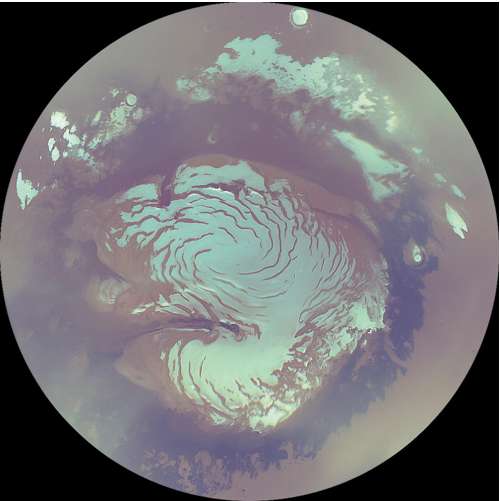Nasa set to reveal the secrets of Mars

Mars has not given up its secrets easily. Named after the Roman god of war, it has punished previous attempts to investigate its mysteries, and millions of pounds of hi-tech equipment has been lost. So next Sunday scientists will be holding their breath as they send their £200m probe final instructions before it attempts a complicated landing at the planet's north pole.
It has taken more than 30 years and numerous missions to our closest neighbour to discover that frozen water lies just underneath a quarter of the Martian surface, which could indicate if the planet has ever supported life.
The latest, Phoenix Mars Lander, as it is called, will touch down next Sunday following a 171 million-mile journey with a three-month mission to dig into that tundra and discover if the ice ever melts, and if it contains any organic matter such as carbon.
The catch is that it is speeding towards the mysterious red planet at 6,000 mph, which will increase to 13,000mph as it is captured by Martian gravity. It will then have just minutes to reduce this speed to zero.
Other attempts to send life-hunting probes have failed catastrophically. The last Nasa probe to the polar regions, in 1999, out of which this mission was born, crash landed and was never heard from. A similar fate is believed to have befallen Beagle 2, which famously failed to phone home on Boxing Day 2003.
Some missions, however, have been successful. Two rovers, which landed on Mars in 2004 and were designed to last three months, still send back stunning pictures of the desolate landscape along with reams of information. They, however, were dropped on the planet cushioned in huge airbags. Phoenix will attempt to touch down on Mars next week using thrusters, a method last used successfully in 1976 but which failed so disastrously nine years ago.
"We think we've ironed all the bugs out," said Professor Peter Smith, in charge of the mission, yesterday.
"There's a great deal to be learned. This is the most incredible mission ever flown. We are taking the next step on Mars. Does the frozen water melt? Is it an inhabitable zone? Are there organic materials – all the ingredients that make it an inhabitable place for life.
"We are zeroing in on whether there was life on Mars. But a lot can go wrong. I'm starting to turn a little gooey."
It's no wonder. Phoenix will initially be slowed by the friction of Mars's atmosphere to 900mph, which will raise the temperature on its heatshield to around 2,600F (1,427C). It will then deploy a parachute, slowing the probe to around 125 mph, which will be jettisoned. The probe will then freefall for a split second, before, hopefully, its thrusters fire and its legs unfold.
In the meantime it is heading towards the planet like a dart, but wide of its target, Professor Smith said.
"We had to make some adjustments to its course yesterday," he said. "And there'll be another next week. After that you have to weigh the risk of making any adjustments. You can do too much. Any time you fire the jet you're taking a risk. So it gets dicey."
Subscribe to Independent Premium to bookmark this article
Want to bookmark your favourite articles and stories to read or reference later? Start your Independent Premium subscription today.

Join our commenting forum
Join thought-provoking conversations, follow other Independent readers and see their replies